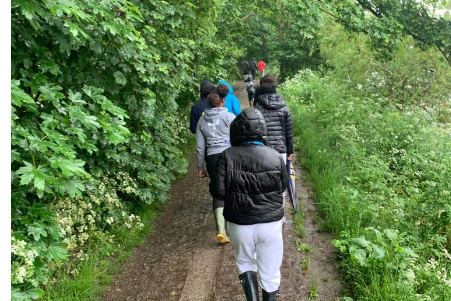
This project encourages aerobic exercise through walking and cycling activity programmes.
All the individual programmes are designed to position everyday exercise as central to a participant’s way of life, along with teaching new skills that support lifestyle change. The project supports those who are isolated within the community, including those who are less likely to use exercise as a form of leisure, personal transport, or community and neighbourly engagement. It can also benefit those who are infrequent, lapsed or reluctant walkers and/or cyclists.
The project is run by qualified coaches and can engage a doctor, or another health professional, or a dietician who can run ‘good diet and wellbeing’ consultation workshops throughout the project. The qualified coaches can also encourage and help those who would otherwise not participate in such programmes.
The project includes two, two-hour long events per week and can include any of the following activity programs:
- Cycling in the park – 1. for beginners only, 2. parent or guardian and child cycling, 3. cycling for all ages and abilities, 4. cycling for participants with special needs, 5. older people cycling
- Brisk walks to or between local parks – after school and mid-term walks for school-age students to encourage walking or cycling to school
- Cycling challenge of the month – a 10km cycle around a London park - for all age groups
- Walking with the elderly – park walking for wellbeing, exercise and companionship
- Better diet for better wellbeing – workshops led by a qualified health/diet worker who puts exercise and diet central to the upkeep of a good life
Target audience and engagement
- The key target audience for this project are ethnic minorities, over-60s and people from disadvantaged backgrounds. This programme could be easily modified to suit a wide range of demographics
- Promote your project by hosting or attending events and using publicity materials, such as leaflets or posters
- Use existing networks of community groups, or seek out specialist and charity organisations who work with your target group, to raise awareness of your activities
- Engagement can also be through social media, with specific targeting to potential user groups
Reach
- Medium (30-40 participants)
- Geographically - anywhere there are green, open spaces. Example spaces include, parks and woodlands, estates, managed gardens, or other quiet open spaces
Equipment needed
- Bikes - Participants own or hired bikes
- Safety equipment (helmets, lights, Hi-Vis vests, etc)
Resources needed
- Project Leader:
-Oversee the project, ensure the participants feel safe and enjoy their experience
Track equipment and make sure that it is all returned and cleaned as needed
-Ensure all funding criteria and documentation is met
-Run risk assessments for safeguarding, injuries and identify any other concerns which may affect project delivery
-Gather feedback from participants to input to future sessions or future projects
-The project lead should have the requisite level of DBS and understand health and safety needs and preferably be first aid trained - Qualified aerobic coaches/doctor/dietician:
-Run the sessions
-Help answer queries
-Contribute to overseeing activities
-Run the scheduled program of activities - Storage Space:
-You will need somewhere to store equipment. This could be at a community centre, in an existing office, or perhaps another local business that has a storage facility - Publicity:
-Flyers and posters for publicity of the sessions, shared and placed around the community where potential participants might be - Refreshments:
-Tea, coffee and snacks at every session, this will lighten the mood, bring people together and offer an incentive for people to come
Estimated project costs
- Bike and safety equipment hire £800
- Qualified aerobic coaches/doctors/dietician £3,900
- Publicity – flyers and posters £130
- Public liability insurance (if needed) £170
Top tips/key learnings
- Ensure that you understand the needs of your participants. If they are getting what they need from the programme they are more likely to recommend you and allow your participant numbers to grow year on year
- Some of the project expenses may need to be covered as in-kind donations or match-funded due to the specialist nature and therefore cost of the aerobics instructors
- Activities that bring young people and their parents together are often appreciated by both groups and can improve engagement
- Keep the activities nearby and easily accessible to make it easy for parents to participate
- Take advantage of the training programme that is offered by Walking and Cycling Grants London
Maximising local contacts
- Contact charities and organisations that specialise in your chosen target audience. Strong working relationships with these groups will encourage participant referrals from their network and will improve information sharing
- Engage with your local council - they may be able to lend you equipment, help market the project, or help secure a local space for meetings
This project idea was provided by Brixton Wings
If you decide to run your own version of this project in your community, please email us at wcgl@groundwork.org.uk. We love to hear that we are inspiring people to walk and cycle.